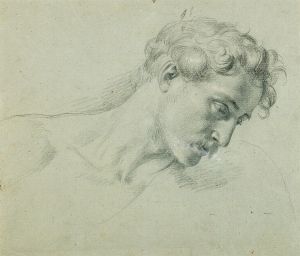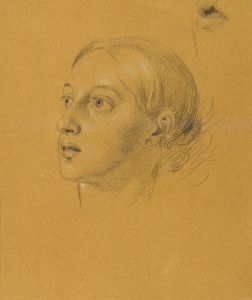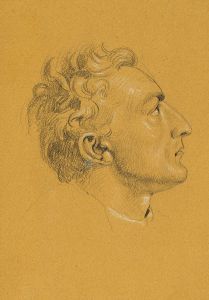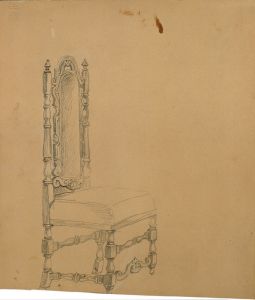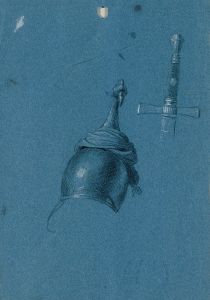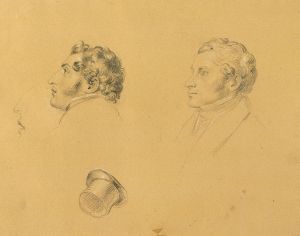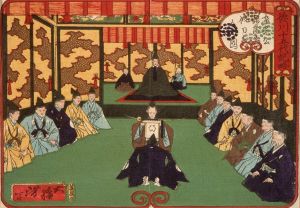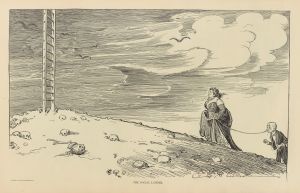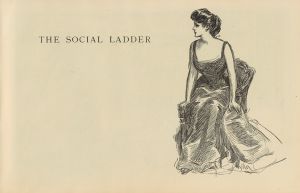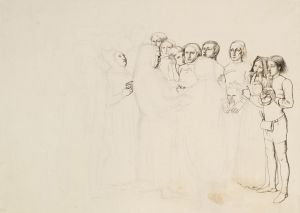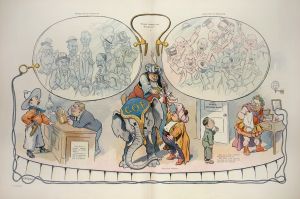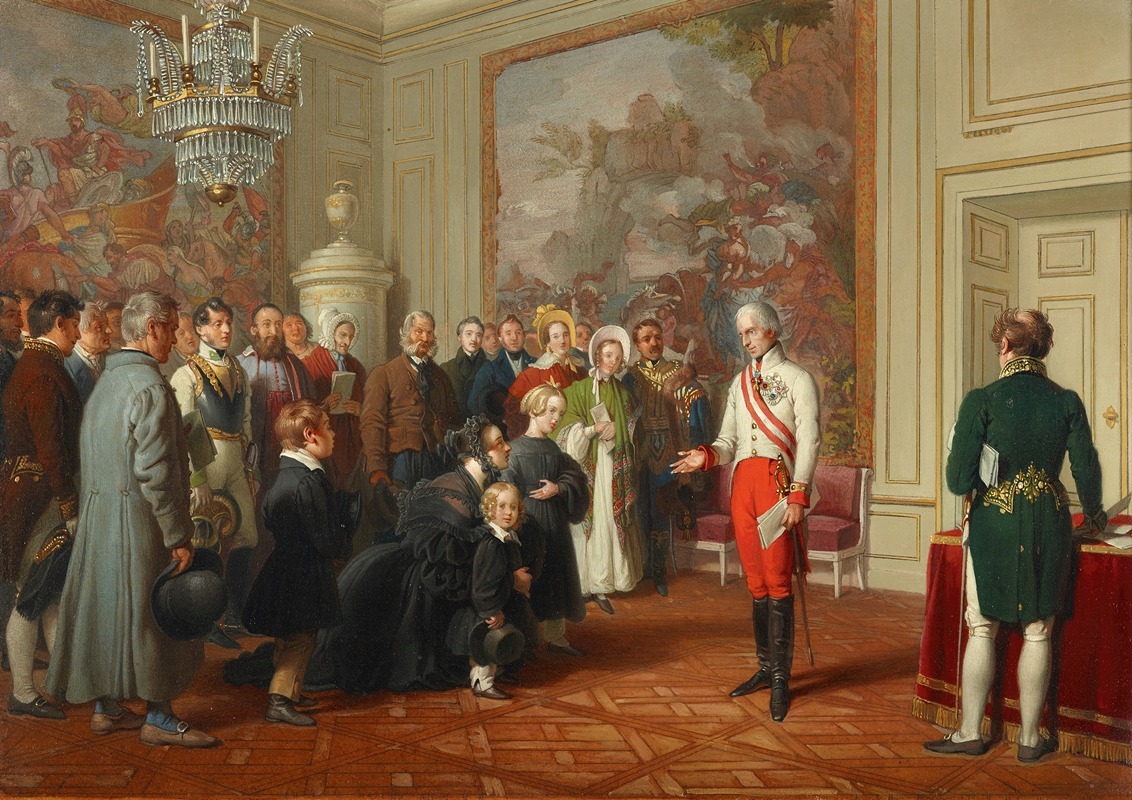
Kaiser Franz I. erteilt allgemeine Audienz
A hand-painted replica of Johann Peter Krafft’s masterpiece Kaiser Franz I. erteilt allgemeine Audienz, meticulously crafted by professional artists to capture the true essence of the original. Each piece is created with museum-quality canvas and rare mineral pigments, carefully painted by experienced artists with delicate brushstrokes and rich, layered colors to perfectly recreate the texture of the original artwork. Unlike machine-printed reproductions, this hand-painted version brings the painting to life, infused with the artist’s emotions and skill in every stroke. Whether for personal collection or home decoration, it instantly elevates the artistic atmosphere of any space.
Johann Peter Krafft's painting "Kaiser Franz I. erteilt allgemeine Audienz" is a significant work of art that captures a moment from the early 19th century, reflecting the political and social atmosphere of the time. Johann Peter Krafft, an Austrian painter born in 1780, was known for his historical and genre paintings. He played a crucial role in the development of Austrian art during the Biedermeier period, a time characterized by a focus on domesticity and a retreat from the political upheavals of the era.
The painting depicts Emperor Francis I of Austria, who reigned from 1804 to 1835, granting a public audience. This scene is emblematic of the emperor's role as a ruler who was accessible to his subjects, a common theme in royal iconography intended to portray the monarch as a benevolent and approachable figure. Francis I was the first Emperor of Austria and also served as the last Holy Roman Emperor under the name Francis II, before the dissolution of the Holy Roman Empire in 1806.
Krafft's work is notable for its attention to detail and the realistic portrayal of the figures present in the audience. The composition likely includes a diverse group of individuals, representing various social classes and regions of the Austrian Empire, which was a multi-ethnic and multi-lingual entity. This diversity would have been an important aspect of the painting, highlighting the emperor's role as a unifying figure in a complex and diverse empire.
The painting is executed in the style typical of the Biedermeier period, which emphasized clarity, order, and a focus on the everyday life of the middle class. This style was a reaction to the excesses of the preceding Romantic period and was characterized by a more restrained and realistic approach to art. Krafft's work fits well within this context, as it combines historical subject matter with a clear and precise style.
Krafft's ability to capture the likeness of his subjects and the grandeur of the imperial setting would have been highly valued in a period when art served not only as decoration but also as a means of communication and propaganda. Paintings like "Kaiser Franz I. erteilt allgemeine Audienz" were important tools for reinforcing the legitimacy and authority of the ruling class, particularly in a time of political change and uncertainty.
The painting is housed in the Belvedere Museum in Vienna, which holds a significant collection of Austrian art. The Belvedere is renowned for its extensive collection of works from the Middle Ages to the present day, and Krafft's painting is an important part of its 19th-century holdings. The museum's collection provides valuable insights into the cultural and historical context of Austria during this period.
Overall, Johann Peter Krafft's "Kaiser Franz I. erteilt allgemeine Audienz" is a noteworthy example of Biedermeier art, reflecting the political and social dynamics of early 19th-century Austria. Through its detailed portrayal of Emperor Francis I and his subjects, the painting offers a glimpse into the values and aesthetics of the time, making it a valuable piece for both art historians and those interested in the history of the Austrian Empire.






